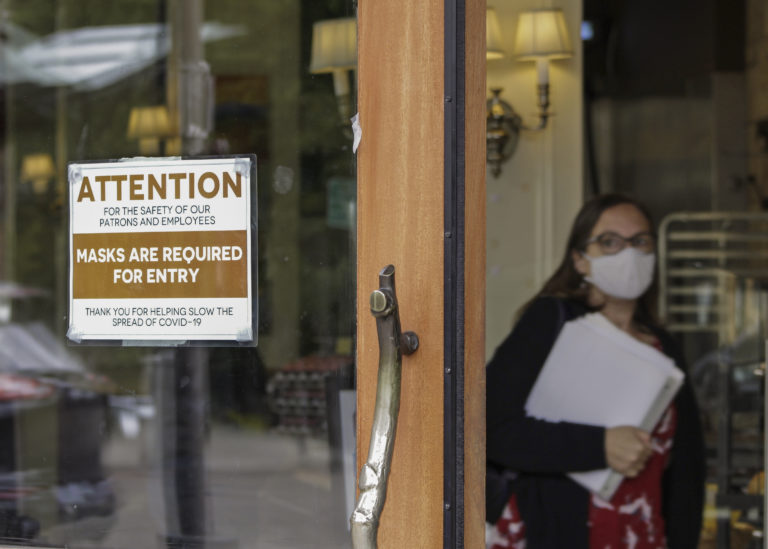
HAWAII (AP) – The COVID-19 surge that is sending hospitalizations to all-time highs in parts of the South is also clobbering states like Hawaii and Oregon that were once seen as pandemic success stories.
After months in which they kept cases and hospitalizations at manageable levels, they are watching progress slip away as record numbers of patients overwhelm bone-tired health care workers.
Oregon — like Florida, Arkansas and Louisiana — has more people in the hospital with COVID-19 than at any other point in the pandemic. Hawaii is about to reach that mark, too.
“It’s heartbreaking. People are exhausted. You can see it in their eyes,” said Dr. Jason Kuhl, chief medical officer at Oregon’s Providence Medford Medical Center, where patients are left on gurneys in hallways, their monitoring machines beeping away.
In other developments, the Food and Drug Administration is expected to authorize COVID-19 booster shots for certain people with weakened immune systems, such as cancer patients and organ transplant recipients, to give them an extra dose of protection.
The U.S. is seeing the virus storming back, driven by a combination of the highly contagious delta variant and lagging vaccination rates, especially in the South and other rural and conservative parts of the country.
New cases nationwide are averaging about 123,000 per day, a level last seen in early February, and deaths are running at over 500 a day, turning the clock back to May.
For the most part during the pandemic, Hawaii enjoyed one of the lowest infection and death rates in the nation. In recent days, though, it reported record highs of more than 600 new virus cases daily.
On its worst day in 2020, Hawaii had 291 patients hospitalized with the coronavirus. Officials expect to hit 300 by the end of this week.
Demand for COVID-19 shots in the state early on seemed promising, but it took three weeks — much longer than expected — to get from 50% to 60% of the eligible population fully vaccinated. Vaccinations have since plateaued. Nationally, the rate is about 59%.
The biggest hospital on Hawaii’s Big Island is feeling the pressure. Out of 128 acute beds, 116 were taken Wednesday at Hilo Medical Center, and the hospital’s 11 intensive care unit beds are almost always full these days, spokeswoman Elena Cabatu said.
“If someone out there has a heart attack or a sepsis or gets into a bad accident that requires intensive care, we will have to hold that person in the emergency department,” Cabatu said.
“I’m surprised we landed here,” she lamented. “The hope during the mass vax clinics was just so high.”
Hilton Raethel, president and CEO of the Healthcare Association of Hawaii, disputed any notion that the rebound in tourism in Hawaii is largely to blame.
“The tourists have been a source for infection, but they’ve never been the predominant source of infection,” Raethel said. “There’s a lot more concern about people from Hawaii, residents who go to the South, go to Vegas, to other places, and they come back and spread it.”
In Oregon, Gov. Kate Brown announced this week that nearly everyone will have to wear masks again in indoor public spaces, regardless of their vaccination status.
For the second straight day Wednesday, the state reported a record number of hospitalized COVID-19 patients — 665. The previous peak of 622 came during a November surge, before the vaccine became available. ICU beds across the state are about 90% full.
As of a week ago, just over 56% of the vaccine-eligible population in Oregon was fully vaccinated.
Throughout the pandemic, health officials have described Oregon as a success story, largely because of its tight restrictions, which were lifted at the end of June.
Meanwhile, White House coronavirus coordinator Jeff Zients said more people are getting vaccinated in states with the highest infection rates, including Arkansas, Louisiana, Alabama and Mississippi.
“We’re getting more shots in the arms in the places that need them in the most. That’s what it’s going to take to end this pandemic,” he said.
In hard-hit Florida, Gov. Ron DeSantis, a Republican who has steadfastly blocked mandatory mask-wearing, announced an effort Thursday to expand the use of a COVID-19 treatment known as monoclonal antibodies to relieve pressure on hospitals.
As reported by Vos Iz Neias
